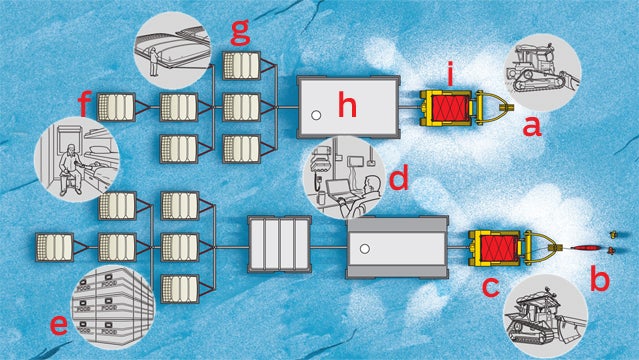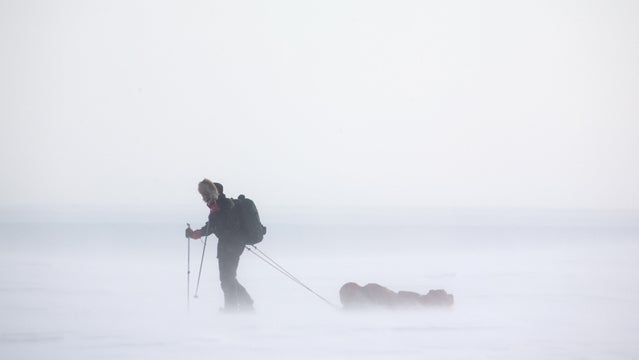March of the Engines: The Most Ambitious Polar Expedition in History
Five years ago, , often referred to as the world’s greatest living explorer, began plotting to knock off one of the last great milestones in polar exploration: skiing 2,000 miles across Antarctica in winter. Fiennes, who was the first to reach the North and South Poles by land and is the oldest Brit to have climbed Everest (at age 65), originally conceived the expedition as a two-man assault. But the mission was deemed so perilous—a rescue is nearly impossible in winter because of the cold—that Britain’s Foreign Office, which regulates journeys on Antarctica, refused to issue permits unless the expedition was completely self-sufficient. So Fiennes adapted.
His expedition, dubbed the , is now one of the largest non-governmental initiatives ever: a six-person, 200-ton caravan with more than 200 sponsors. Though the 68-year-old Fiennes was forced to pull out of the expedition itself last month due to frostbite incurred on a training run at camp, the ice team will continue. When team leader Anton Bowring, 63, plus two mechanics, a doctor, and an engineer set off on March 20 (weather permitting), their trains will consist of two heavily modified Finning Caterpillars hauling two 28-foot live-work trailers, a food sledge, and 14 fuel skids for the next six months.
The dangers are obvious. In winter, Antarctica is shrouded in darkness, and temperatures plunge to minus 130 degrees. Breathing air that cold can cause lungs to freeze, so those venturing outside will wear face masks that warm the air before it’s inhaled. The landscape is riddled with crevasses, so losing a Caterpillar into an icy abyss is a possibility. Then there’s the danger of a massive fuel fire destroying one of the caravans. The only recourse should catastrophe strike? Hunker down until summer rolls around.
Hit the jump to find out more about the Coldest Journey mega-caravan.
March of the Engines: Inside the Beast
A look at Ranulph Fiennes’ epic snowcat caravan.

A) THE CATS
A small heater will keep fluids and batteries from freezing, tracks have removable spikes that can be used to climb glacial ice, and tow points will allow one Cat to pull the other out of a crevasse.
B) LIGHTING
High-intensity, 360-degree illumination will provide relief from constant darkness.
C) RADAR
A ground-penetrating system, pulled by a skier or carried by a Cat, will help identify crevasses. However, on the Cat, the system offers only 30 feet of warning. Since the caravan can’t back up, stumbling upon a crevasse could mean hours of delays as it’s filled in.
D) COMMUNICATIONS
A media area will hold laptops, satellite gear, a real-time tracking system, and film equipment. With an Iridium satellite hookup, the team will have Internet and phone service the whole time.
E) PROVISIONS
A sledge will carry 2.8 tons of food, enough to last a year. The expedition’s math: 5,000 calories per day times six people for 390 days equals 12 million calories.
F) FIRST AID
A portable X-ray machine, ultrasound, and defibrillator round out the medical kit, which is all the help they’ll have.
G) FUEL SUPPLY��
Each Cat will tow seven skids with a combined 10,500 gallons of Jet A1 FSII fuel. An ice inhibitor in the fuel will keep it liquid to minus 100 degrees. However, the engine won’t turn over below minus 95 degrees, so they’ll have to wait out the cold.
H) HOME AWAY FROM HOME
Living quarters, complete with three bunks, kitchen, and shower, will be kept at 65 degrees (average temperature outside: minus 80 degrees). A TV, iPads, six terabytes of movies, and a carbon-fiber guitar will also be available.
I) HORSEPOWER
Finning’s Cats were designed to haul 55 tons, but each of the trains will weigh nearly twice that. But for repairs, the caravan will need to stop on a downslope in order to get moving again.��


